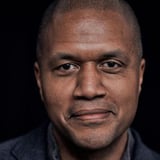Summary
Bloomberg's UX team is excited to share its 15-year evolution -- from employing UX as a new, innovative process to UX playing a central role in every part of the product development lifecycle. Ash Brown, Global Head of UX, will share how the company's UX team has grown and how it collaborates with its partners in Product. This will be followed by a panel discussion with two designers and two product managers who will talk about the different ways they've worked together. Bring your questions, because we’ll close with a Q&A session.
Key Insights
-
•
Bloomberg’s UX evolved through four phases: innovating processes, taking on special projects, embedding UX in product teams, and fostering UX skills across the organization.
-
•
Initial UX efforts focused on methodical user-centered design techniques like wireframing and storyboarding to reduce bias and increase value delivery.
-
•
Embedding UX designers alongside product managers and engineers leads to more strategic, continuous collaboration rather than reactive design fixes.
-
•
Product managers benefit from designers who ask curious, probing questions and are open to exploring multiple solution options.
-
•
Providing detailed context and understanding business goals enables designers to deliver more effective and relevant user experiences.
-
•
User research and usability testing are critical to validate hypotheses and inform product pivots before development.
-
•
Successful collaboration needs mutual trust and respect, treating UX, product, and engineering as equally important partners.
-
•
Healthy disagreements are constructive and should focus on shared outcomes rather than individual ideas or territoriality.
-
•
UX is not just about consistency but tailoring experiences to different platforms and user contexts, such as mobile attention spans.
-
•
Good design directly impacts business value by increasing usability, adoption, and customer satisfaction.
Notable Quotes
"Good UX is good business."
"If it’s not usable it’s not valuable."
"UX success equals team success."
"We are like three legs of a chair: product, engineer, and UX all contribute to stability."
"Curiosity and asking lots of questions helps push boundaries and improve solutions."
"Providing context to designers leads to much better design outcomes."
"Design needs to balance business strategy and technology limitations but always keep users centered."
"Healthy debate is key, and we should be biased toward a successful outcome, not our own ideas."
"It’s important not to fall in love with a feature but stay open to new information and feedback."
"Investing time upfront in user research and discovery avoids rushed fixes that don’t meet clients’ needs."
Or choose a question:
















More Videos

"We made this move in January 2020 — our research and insights team moved out of UX but stayed within product organizations."
Nalini KotamrajuResearch After UX
March 25, 2024

"Don't be a pot plant, be a crab."
Dean BroadleyNot Black Enough to be White
January 8, 2024

"We’re not going for perfection. We’re going for excellence and change."
Denise Jacobs Nancy Douyon Renee Reid Lisa WelchmanInteractive Keynote: Social Change by Design
January 8, 2024

"Pilots don’t need to be perfect, they just need enough moving parts to gather useful feedback quickly."
Kim Fellman CohenMeasuring the Designer Experience
October 23, 2019

"Power is the ability to change another person’s reality."
George AyeThat Quiet Little Voice: When Design and Ethics Collide
November 16, 2022

"Google’s Material Design has echoes of design decisions flowing through many of their applications."
Nathan CurtisBeyond the Toolkit: Spreading a System Across People & Products
June 9, 2016

"We focus on delivering high quality but also moving fast—being comfortable negotiating that tension is important."
Greg PetroffThe Compass Mission
March 10, 2021

"Remote research methods can cast a wider net, but some briefs still require on-the-ground presence."
Chloe Amos-EdkinsA Cultural Approach: Research in the Context of Glocalisation
March 27, 2023

"85% of people were leaving after viewing only one page, showing severe bounce issues."
Mackenzie Cockram Sara Branco Cunha Ian FranklinIntegrating Qualitative and Quantitative Research from Discovery to Live
December 16, 2022















